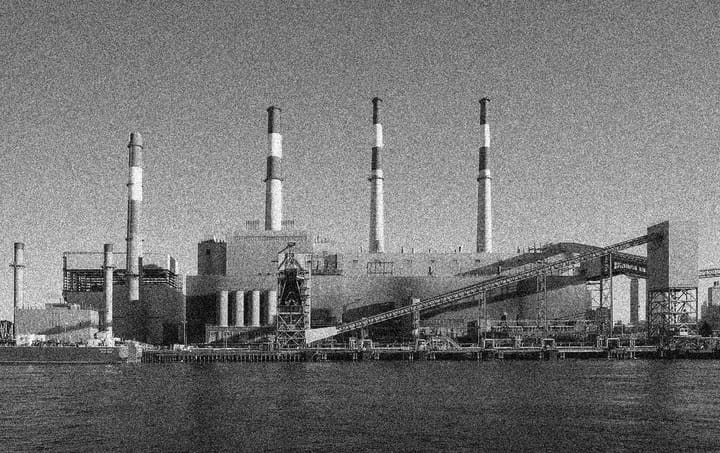The New Workerist Right’s Industrial Policy Fantasy
The well-laid plans of these serious men don’t make much sense, but then they don’t need to.

The new workerist Right (good overview here, good critique here) is composed of serious men saying serious things. They’re not just whining into the digital void about petty cultural issues, like the PMC leftoid grifters from whose ranks they seek to pilfer new writers. They are hatching concrete plans for a renewal of American society, and these plans all circle around two magical words: industrial policy.
This cornerstone of the new Right’s political program is usefully defined by Arthur Herman as “a program of economic reforms that give the government extraordinary authority, as well as fiscal and regulatory powers, to change a country’s industrial structure or—less ambitiously—promote a targeted sector of the economy.” Plenty of European countries have long used such policies—often under the direction of social democratic or labor governments—to help both shore up domestic economic performance and raise the wages and living standards of workers in particular industries.
An industrial policy in and of itself is a welcome intervention, but the first thing to notice about the new Right’s use of it is that it’s embraced as a “responsible” alternative to social welfare, which they see as ultimately damaging to the economy. In an interview with Eric Levitz in New York Magazine, Oren Cass cautions against a generous safety net, which strips away the “rewards of work” and results in a lag in labor force participation. To his credit, Levitz corrects Cass on the reality that labor force participation and a generous welfare state are hardly incompatible; in fact, they may even be positively correlated. There’s nothing incompatible about industrial and welfare policy, and historically they have been deployed together.
Instead of redistributive social programs, Sridhar Kota and Tom Mahoney of American Affairs advocate for the establishment of a “National Manufacturing Foundation,” which would invest in engineering training and research, and ensure that the fruits of domestic innovation result in domestic manufacturing, and thus U.S. job creation. The goal is to restore our “industrial commons” and in so doing, reverse our manufacturing trade deficits, raise American living standards, and “counter China’s rise as the world’s preeminent industrial power.” (“Industrial commons” is a particularly funny neologism which seems to suggest that the halcyon days of capitalist industry were predicated on a fundamental collectivism and not vicious competition.) One can see the appeal of Trump, whose hawkishness on China and promises to revive American industry initially attracted conservative millennials (many have since changed their minds).
The problem here is to think that deindustrialization is a uniquely American phenomenon so easily reversed by an emphasis on economic nationalism. Deindustrialization is not a function of a lack of necessary investment in productive capacities but instead an outcome of endogenous pressures generated by the basic laws of profit and competition. The new Right’s solution seems to assume that reindustrialization is simply a matter of investing in research to shore up “our core production skills, infrastructure, and capabilities.” But what good are those skills and infrastructural capacities without any pressure to produce a competitive manufacturing sector?
It’s not that American capitalists lack the skilled workforce, innovative techniques, factory infrastructure, or willpower to produce cars, toasters, and iPhones today; it’s that global competition forces the capitalist to invest in the cheapest labor supply available and then further to make that labor hyper-productive: either by sweating workers to the brink of exhaustion or by automating as much of the labor process as possible. Nowhere do the authors confront this problem. Much of what Kota and Mahoney argue for is more investment in R&D for industrial design in the hopes that this investment would stimulate domestic production. It’s surely possible that this kind of program could help a few fledging “hardware start-ups,” as they call them, but the assumption that investments in research and development lead to expansions of production has the equation exactly backwards—it’s massive production boosts that generate new productive capacities and investments in industrial research. Far from reorganizing our industrial structure, then, this program leaves the very pressures that generate automation and deindustrialization in the first place intact.
There is yet another problem. Even if we managed to suspend the laws of profit-maximization through massive government subsidies to automobile, appliance, and other consumer manufacturing and we saw something of a Made in USA boom, who is going to buy all of the things produced by the next American industrial revolution?
Part of the answer is undoubtedly American workers, whose purchasing capacity will purportedly grow once they trade in their low-productivity jobs in the service sector for high-productivity ones in manufacturing. But the primary answer, frighteningly ready-to-hand for the new Right, is the military. While the “Chinese have been out-planning, outspending, and out-resourcing the United States—sometimes with the help of our own high-tech industry—to build the defense industrial base of the future,” Herman argues, our own defense supply chain reveals “an alarming dependency on foreign nations, especially China.” Manufacturing for economic prosperity, for family stability, but mostly manufacturing “to shore up our own decaying defense industrial base.”
Leaving aside the obvious lunacy of further padding a military budget that exceeds that of the next ten countries combined, this industrial plan fails even as an economic strategy. First, an industrial policy focused primarily on manufacturing in the service of “defense,” however broadly construed, is inherently self-limiting. Even if the United States continues its endless wars abroad, contemporary warfare employs progressively fewer and smaller vehicles, weapons, and ammunition. That means less demand for steel, iron, and aluminum for fewer tanks, planes, and ships. The reason our naval fleet slowly rots has less to do with a lack of interest in maintaining naval supremacy and more with a lack of any real need to do so, as warfare today relies increasingly on high-tech, high-efficiency, often remote-controlled fleets of vehicles manned by fewer soldiers. Such a narrowly constructed industrial aim would not produce the forward and backward linkages in the economy necessary to generate major wage gains across region and sector.
An industrial policy is a great idea, but how it is implemented, and to what end, matters both politically and economically. Imagine a real infrastructure bill—not the current bipartisan privatization plan but a policy designed to produce fleets of electric buses and improve the efficiency of solar panels for the federal government, lay thousands of miles of rail, rebuild schools, bridges, highways, all while making use of the power of the congressional purse in what Christian Parenti calls “the big green buy.” No doubt hard-minded conservatives balk at the mention of climate concerns, puffed up by the Right as the stalking horse for crazy leftwing idealism. So for those who think staving off climate disasters is the least of our concerns: by anyone’s account, manufacturing is only one sector—others being construction, agriculture, transportation, and energy—that requires transformation as part of the vast infrastructure modernization program we need right now. This program, rather than the sclerotic defense spending of the new Right, would bolster heavy industry, and the linkages created by such massive construction and industrial projects would not only raise wages but also develop innumerable smaller manufacturing and service needs. The Chinese did exactly this when they embarked on their massive rail and nuclear expansions, and the wages and expansion of productive capacities generated by those projects created a massive new working class with higher wages throughout the economy and helped the Chinese survive the global economic meltdown.
Ironically the Right’s anti-environmentalism prevents them from conceiving of a robust industrial renewal. As much as they talk about the future, it’s clear that they’re much more interested in a return to the past, when manufacturing dynamism undergirded the Fordist family and a rapidly growing security state. That vision is very appropriate for the expanding consumer society of the 1950s, but it’s extremely myopic for meeting America’s infrastructural needs today.
But at the end of the day, it’s not really necessary for the new workerist Right’s industrial policy to make sense. It’s done its job if it gives the right appearance to these very serious men—if it gives them papers to put in their briefcases, and phrases like R&D to burp up on command. The ones that act the part convincingly will be sucked up by the conservative foundation world to write public statements that more senior serious men (like Marco Rubio and Jeff Sessions) will sign. It’s all about filling a niche, so that when Republicans want that pro-worker sheen without relying on the same old bromides, they’ve got some ostensibly new bromides to trot out. The new workerist Right’s industrial policy is a fantasy, but it’s a fantasy with a point.
■
Dominic King is a writer from Cleveland (but temporarily a content creator living in Brooklyn).



